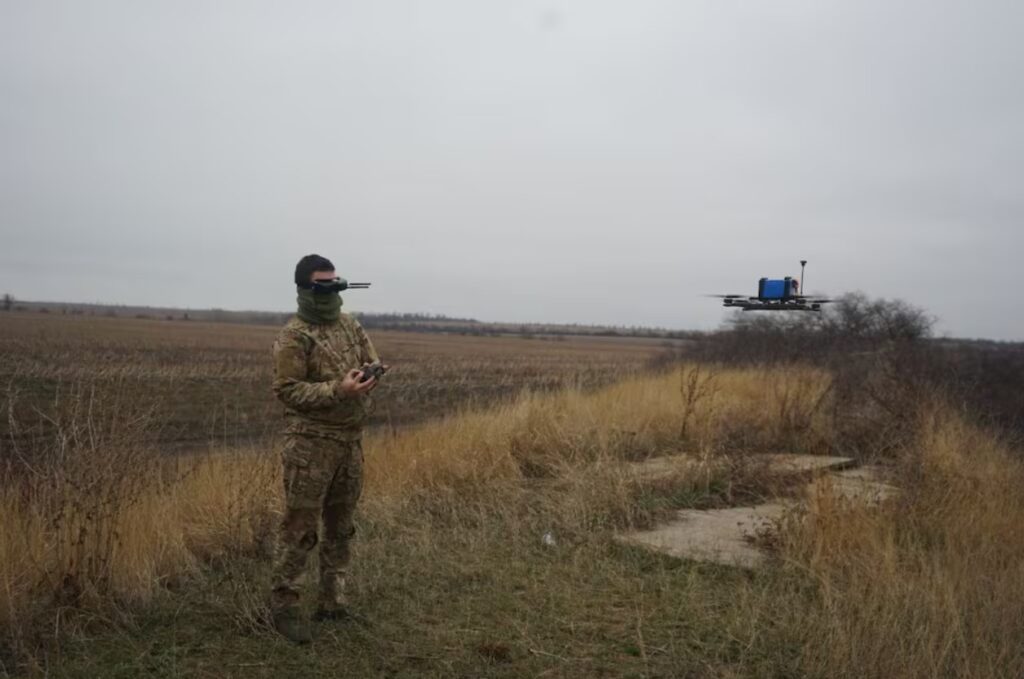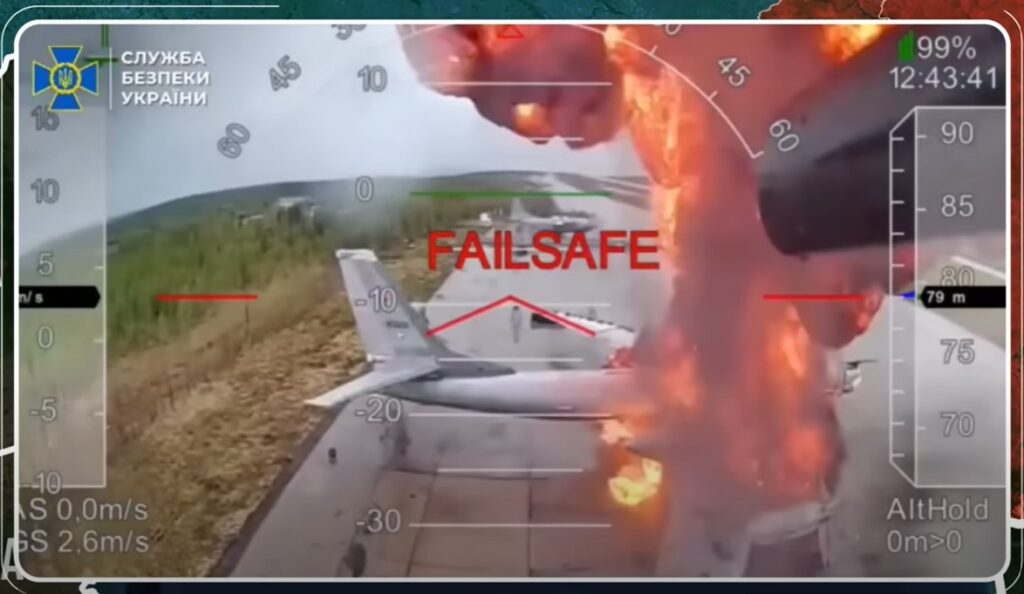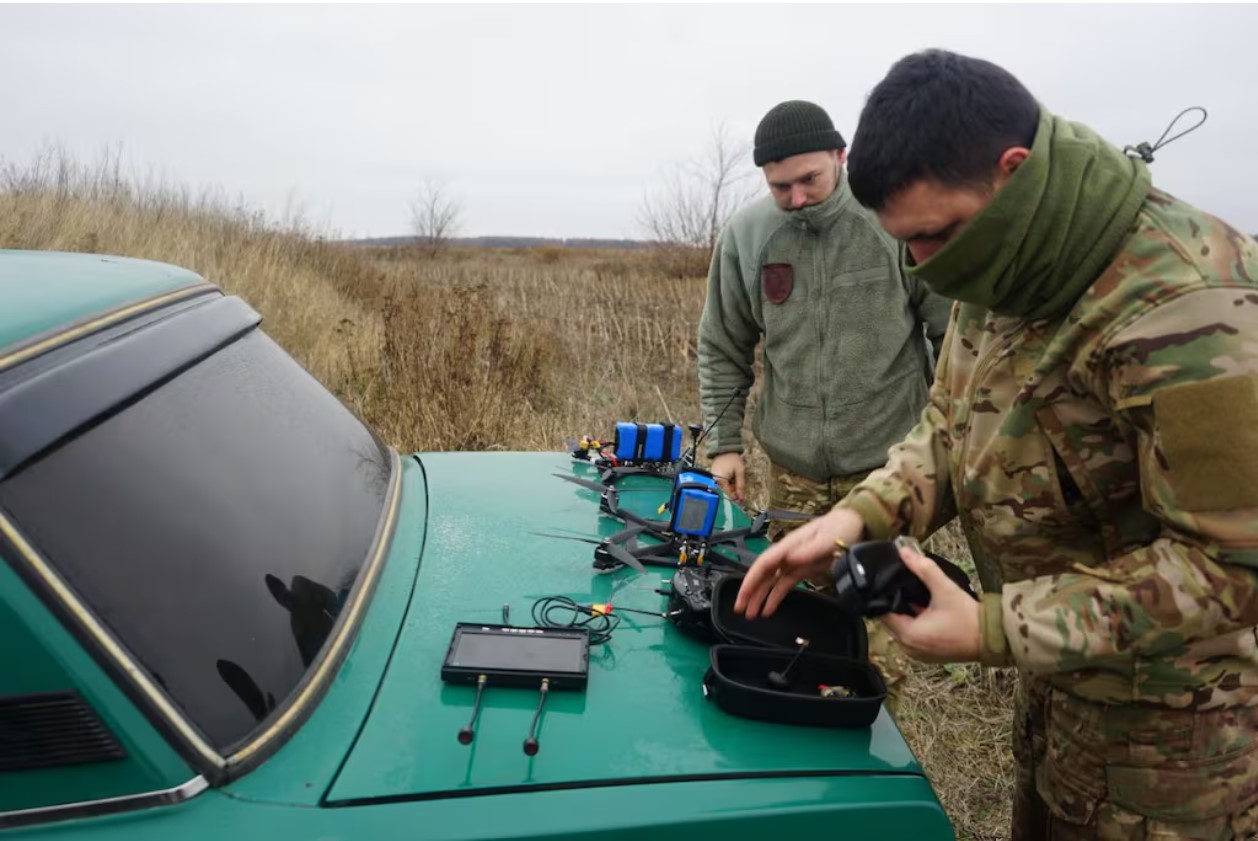From junk food packaging to deep-strike drone raids, Ukraine is turning everyday materials into weapons—and using them to fight one of the largest militaries in the world, Defense News reports.
In early 2024, near the front lines of Avdiivka in Donetsk Oblast, Ukrainian drone operator Vadim Adamov reached for an empty Pringles can. Out of standard metal casings for explosives, he packed the can with sulphate and plastic explosive, hooked it to a DJI Mavic drone, and sent it flying.
“I don’t need your f***ing American shells,” Adamov said, launching the makeshift bomb at a Russian armored vehicle. It worked.
The can cost $1.50. The drone, a few thousand. The destroyed target? Likely worth hundreds of thousands.
Ukraine’s low-cost drones are delivering high-value results
Ukraine’s improvised weapons strategy—born from necessity—is now at the core of its military doctrine. Drones, especially first-person view (FPV) types, are being used for surveillance, direct attacks, and long-range sabotage.
In 2024 alone, Ukraine produced 2.2 million drones. Officials expect that number to more than double to 5 million in 2025.
Much of this production happens in basements, garages, and converted print shops, where parts like motors and cameras are assembled by hobbyists and technicians—many of them self-taught or under 25 years old.

Operation Spiderweb was a warning shot
The June 2024 Operation Spiderweb made headlines when hundreds of Ukrainian drones were smuggled into Russia and used to destroy strategic bombers and spy planes.
But experts say the surprise wasn’t the technology—it was the scale.
“These are the same basic tactics we’ve seen since the start of the war,” a Ukrainian defense official told Defense News. “Spiderweb just showed how far they can go.”
Frontline pilots, gamified warfare
At drone units near Lyman in eastern Ukraine, operators watch footage of confirmed hits, train on obstacle courses, and even earn digital medals and bonuses for successful strikes.
“The best thing to do if you hear one is to play dead,” one pilot said. “But if it gets that close, you’re probably dead already.”
This war now includes leaderboards, ranking systems, and financial incentives for drone kills. It’s war fought with joysticks and VR goggles—sometimes by soldiers barely out of their teens.
Russia responds, and Ukraine counters again
The drone war is now a back-and-forth tech race. Ukrainian forces began using signal jammers to break drone communications. Russia responded by adding ultra-thin fiber-optic spools to their drones, making them resistant to jamming.
Ukraine’s latest move: physical netting over trenches and roads to intercept incoming drones.
The battlefield is evolving daily—this is a “digital trench war,” with each side pushing the limits of adaptation.

More than air power: Ground and sea drones on the rise
At the BraveOne defense-tech conference in Kyiv (February 2025), Kharkiv-based engineer Sasha Rubina unveiled a prototype unmanned ground vehicle (UGV) to deliver food and ammunition to the front.
“The idea is that the person controlling it is in a safe place,” Rubina said. “The fewer people exposed, the more lives we save.”
Ukraine’s strategy now includes land, air, and sea drones, and many of these platforms are produced domestically and deployed within weeks.
Why this matters: Cheap can beat powerful
Ukraine’s military is stretched thin. Since the failed 2023 counteroffensive, the army has faced manpower shortages and frontline fatigue. With negotiations stalled and traditional weapons in limited supply, drones offer a scalable alternative.
As Kipling wrote in Arithmetic on the Frontier:
“Two thousand pounds of education falls to a ten-rupee jezail.”
The line, originally about British officers being killed by cheaply armed fighters in colonial wars, underscores a core truth of asymmetric warfare: expensive training and hardware can still fall to low-cost, clever resistance.
In 2025, it’s a $100 drone destroying a $100,000 tank.
“The odds,” Kipling added, “are on the cheaper man.”




